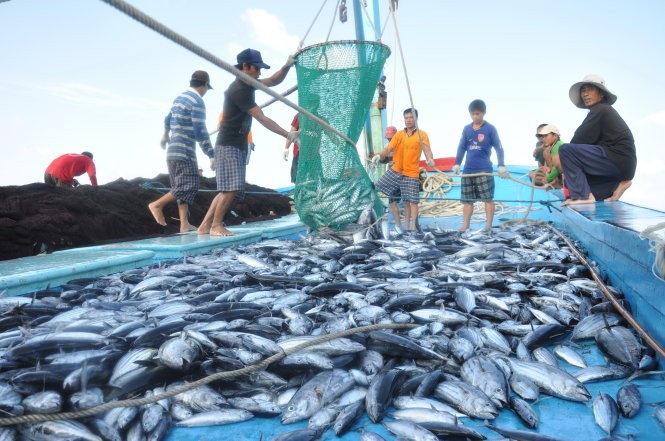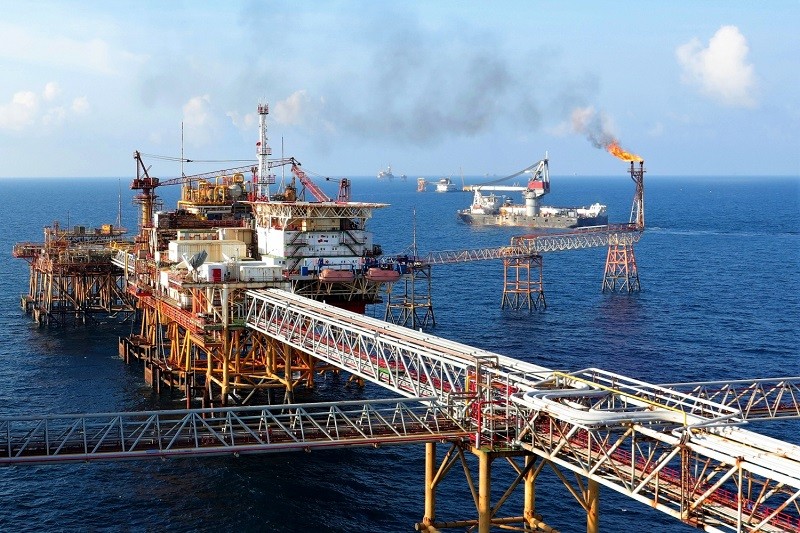
Vietnam's marine economic potential
Latest
 |
| Vietnam’s marine areas have 2,038 species of fish. (Photo: Tan Vu) |
The three major ecosystems commonly mentioned in the East Sea are coral reefs, mangroves, and fishery resources. The East Sea accounts for 20% of Southeast Asia's total coral reef area, while the region accounts for 34% of the world's total coral reef area, with 50 of the world's 70 known coral species present in the West Indo-Pacific region.
The East Sea accounts for 12% of the world's total mangrove forest area and 30% of the total forest area mangroves of Asia with 41 of the 51 known mangrove species in the world. The East Asian seas are home to 20 of the world's 50 known seagrass species, of which 18 grow in coastal areas of the East Sea. The East Sea is also one of the 20 seas with rich seafood resources in the world, with more than 2,000 species of fish, more than 90 species of shrimp and more than 70 species of mollusks.
Vietnam benefits from the East Sea when it is located along the sea and occupies about 1/3 of its surface. Vietnam's marine resources are diverse but the reserves are not high. Vietnam’s marine areas have 2,038 species of fish, of which over 100 species of high significant economic values; 653 species of seaweed; 657 species of zooplankton; 94 species of mangrove plants; 225 species of marine shrimp; 14 species of seagrass; 15 species of sea snakes; 12 species of marine mammals; 5 species of sea turtles and 43 species of waterfowl.
Total allowable fish catches have now declined by 25-30% (from 4 to 3 million tons per year). Vietnam has 20 typical ecosystem types, concentrated in 114 estuaries, 12 lagoons, 50 pools/bays, and thousands of large and small islands. Coral reef ecosystems occupy 1/10 of the sea area (1,122 square kilometers) with about 350 species of coral widely distributed from North to South. Mangroves have about 252,500ha. The seagrass beds have a total area of over 5,583ha. According to scientific reports, 96% of current coral reefs are negatively affected by human exploitation activities, of which nearly 75% of reefs are at high and very high risk. Only 1% of the 1,300 square kilometers of coral reefs along the coast are in very good condition; 26% are in good condition; 41% are medium, the remaining 31% are poor.
Vietnam's oil reserves are estimated at about 4.4 billion barrels, ranking 28th among 52 countries with verified oil reserves in the world and leading in Southeast Asia.
Vietnam's verified gas reserves reach about 0.6 trillion m3, ranking third in the region. Vietnam Oil and Gas Corporation has been implementing oil and gas exploitation activities at 36 fields with 21 oil and gas contracts in the 200 nautical miles exclusive economic zone, and in 5 gas pipeline systems, 03 gas treatment plants (02 in Vung Tau, 01 in Ca Mau). Currently, domestic crude oil production averages 7.5-8.5 million tons/year, equivalent to 24-26 thousand tons/day.
Gas exploitation output reaches 9-11 billion m3/year, equivalent to 26-30 million m3/day. However, the forecast of Vietnam's oil and gas exploitation í not optimistic with a drop from 24 million TOE in 2025 to 10 million TOE by 2045. In the future, Vietnam will no longer be self-sufficient in oil and gas resources and will depend heavily on foreign supplies.
A methane hydrate found in the East Sea is considered a future energy source. The average thickness of sediment to reserve methane hydrate in the East Sea is about 225m, 270m and 365m with methane structures I, II and H, corresponding to the foot of Vietnam's continental shelf slope onwards.
The volume of methane gas in the East Sea can be estimated to be 1.38 × 1014 m3, 1.41 × 1014 m3 and 1.7 1014 m3 for gas hydrate types I, II and H, respectively with evidence of concentrations in Paracel, Southern Taiwan basin, Palawan Trough, Spratly, Tu Chinh-Vung May and Phu Khanh basins. Vietnam has not mastered technical solutions and technologies for exploiting and treating methane hydrate. The assessment, zoning and access to exploration and exploitation technology of this type of resource are necessary tasks to be paid attention to as early.
 |
| Vietnam's verified gas reserves reach about 0.6 trillion m3, ranking third in the region. (Source: PVOIL) |
Wind energy is talked about as much as a lifeline for the blue marine economy. The World Bank in 2021 offers a high scenario for Vietnam as a successful country in the offshore wind industry with an output of 70 GW by 2050, ranking 3rd in Asia (after China and Japan). However, climatic conditions, planning, collection, shipping and maritime disputes will be barriers to this goal.
A 2013 report by the U.S. Naval War College estimated that Vietnam possesses 22 million tons of rare earth elements, mostly on land, compared with China's 55 million tons. The Mekong River basin is considered as the potential to facilitate rare earth formation in the East Sea. The Paracel and Spratly Islands have not very high rare earth reserves. Vietnam has set a production target of over 2 million tons by 20230 and 2.11 million tons by 2050.
Vietnam's marine resources are diverse but not "rich". Vietnam's five major issues related to the use of marine resources are: over-polluted marine environment, overfishing, inadequate scientific research, lack of a common sustainable development management mechanism and maritime disputes.
To emerge as a strong maritime State, Vietnam needs to make more efforts to sustainably manage marine resources and develop marine technology.









